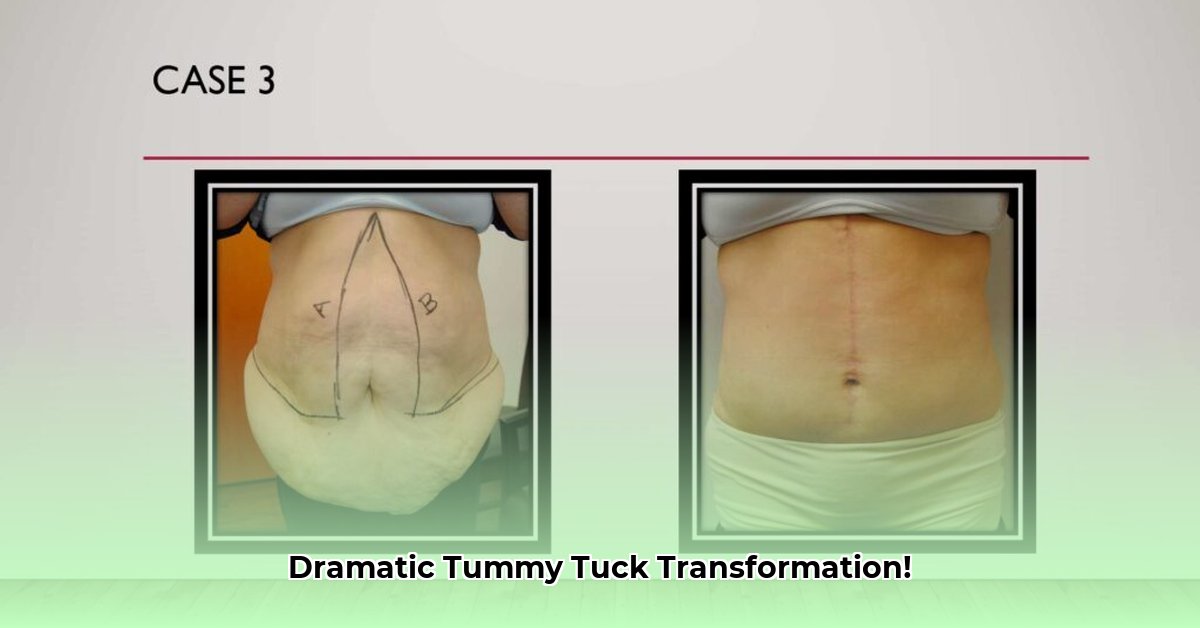
Before the Procedure: Preparing for Your Transformation
Considering a tummy tuck after significant weight loss? This is a major decision requiring careful planning and realistic expectations. Before surgery, you'll need a comprehensive consultation with a board-certified plastic surgeon. This crucial step involves a thorough review of your medical history, weight loss journey, and aesthetic goals. Maintaining a stable weight for several months prior to surgery is paramount. Why? Because significant weight fluctuations post-surgery can compromise results and potentially lead to complications.
During the consultation, your surgeon will explain the procedure in detail, addressing any questions you may have. They'll also discuss the potential risks, including infection, excessive scarring, or fluid collections (seromas – fluid-filled pockets under the skin). It’s vital to have realistic expectations; a tummy tuck is surgery with inherent risks. Finally, a transparent discussion about costs (anesthesia, hospital fees, post-operative care) is essential. This is a significant financial investment, so understanding the complete cost breakdown upfront is crucial. Don't hesitate to ask for clarity on every aspect of the costs.
Your Tummy Tuck Surgery: What to Expect
A tummy tuck, or abdominoplasty, involves removing excess skin and fat from the abdomen, tightening the underlying muscles (rectus abdominis), and reshaping your midsection for a flatter, firmer appearance. The surgery is typically performed under general anesthesia. You'll likely stay in the hospital for a short period post-surgery. Immediately after, expect some discomfort, usually managed with prescription pain medication. Surgical drains may be temporarily placed to remove excess fluid. The duration and intensity of discomfort vary; open communication with your surgical team is vital throughout your recovery. Remember, every individual's experience is unique.
Post-Operative Recovery: Your Step-by-Step Guide
Recovery is a gradual process demanding patience and diligent adherence to your surgeon's instructions.
- Pain Management: Prescription pain relievers manage initial discomfort; over-the-counter options may suffice later. Follow your surgeon's pain management plan meticulously.
- Compression Garment: This vital garment minimizes swelling and supports healing tissues. Wear it as instructed (typically several weeks).
- Dietary Recommendations: A balanced, nutritious diet promotes tissue repair. Your surgeon will provide specific guidance. Avoid excessive sodium to minimize fluid retention.
- Gradual Activity Increase: Rest is crucial initially, but gentle movement improves circulation and healing. Avoid strenuous activities for the period your surgeon specifies.
- Follow-up Appointments: Regular checkups monitor healing, address concerns, and ensure proper wound care. These appointments are essential for a successful recovery.
"Maintaining open communication with your surgeon is key to a smooth recovery," says Dr. Anya Sharma, Board-Certified Plastic Surgeon at the Center for Aesthetic Surgery.
Long-Term Care: Maintaining Your Results
Maintaining your tummy tuck results requires a long-term commitment to a healthy lifestyle.
- Weight Stability: Significant weight fluctuations can compromise results. Maintaining a healthy weight through consistent exercise and a balanced diet is crucial.
- Scar Care: Follow your surgeon's instructions for scar care to minimize visible scarring.
- Follow-up Appointments: Regular checkups allow your surgeon to address any long-term concerns.
Understanding Potential Risks
While a tummy tuck offers significant aesthetic improvement, understanding potential risks is critical. These risks, while generally low, can be serious. Open communication with your surgeon before and after surgery is key to mitigating potential issues.
| Risk Factor | Likelihood | Potential Impact | Mitigation Strategies |
|---|---|---|---|
| Swelling | Moderate | Moderate | Compression garments, elevation, proper hydration |
| Infection | Low | High | Prophylactic antibiotics, sterile surgical techniques |
| Scarring | High | Moderate to High | Experienced surgeon, meticulous wound care |
| Pain | High (initial) | Moderate | Pain medication, rest, ice |
| Seromas/Hematoma | Moderate | Moderate | Proper surgical technique, drainage if needed |
| Anesthesia Complications | Low | High | Thorough pre-operative assessment, experienced anesthesiologist |
Case Studies (with patient consent)
(Space for Before & After photos with patient consent and brief narratives)
Your Journey, Your Decision
This guide provides a general overview; individual experiences vary. This information does not replace a consultation with a qualified plastic surgeon. Schedule a consultation to discuss your situation, goals, and concerns. Open communication is paramount. Remember: This is your journey.